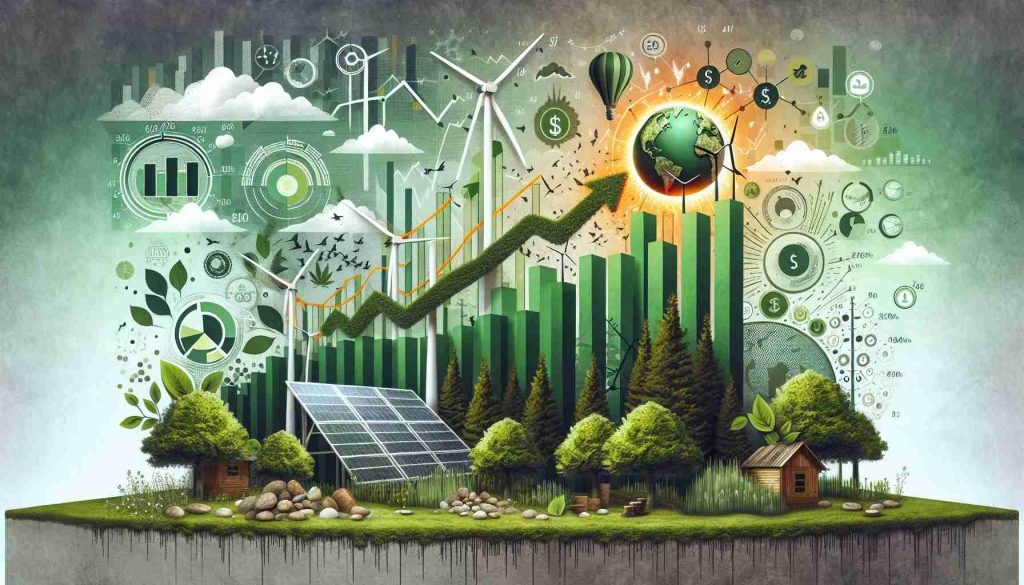Climate change is reshaping investment strategies in the U.S. like never before. As global temperatures rise and natural disasters become more frequent, investors are reevaluating where and how to allocate their funds. This shift is not just a reaction to environmental concerns; it reflects an awareness of the financial risks and opportunities presented by a changing climate.
The focus has shifted toward sustainable, resilient investments that can weather these changes and still provide returns. In this blog post, we’ll explore the ways in which climate change is influencing market tactics, posing new challenges while also opening doors to innovative solutions.
The financial impact of a changing world

The increasing urgency of environmental transformations is now a dominant factor in economic decision-making. Climate change affects various sectors differently, and its unpredictable nature can disrupt traditional investment dynamics. Industries heavily reliant on fossil fuels, for instance, are facing declining demand and heightened regulation, which could lead to stranded assets.
The unpredictability of climate change also translates into market volatility, affecting everything from commodity prices to insurance premiums. Agriculture, real estate, and tourism are among the sectors heavily impacted by extreme weather events and changing climatic conditions. As a result, investors are increasingly looking to diversify their portfolios to include assets that are less susceptible to environmental risks.
Sustainable investments: a new norm?
The concept of sustainable investing has gained significant traction, with many seeing it as a crucial strategy to address and mitigate climate-related risks. Environmental, Social, and Governance (ESG) criteria are becoming an essential part of investment analysis. ESG considerations help investors assess a company’s sustainable practices, social responsibility, and ethical standards.
One of the most noticeable trends is the rise of green finance, including green bonds and sustainable funds. These financial products are specifically designed to fund projects that have a positive environmental impact, such as renewable energy, clean technology, and sustainable agriculture. By investing in these areas, stakeholders can support the transition to a low-carbon economy while potentially enjoying favorable returns.
Challenges and opportunities in the green shift
Despite the momentum towards sustainable investment, several challenges remain. One of the major hurdles is the lack of standardized metrics for assessing environmental impact, which can lead to inconsistencies in ESG reporting. Investors often face difficulties in comparing companies and funds that claim to be environmentally conscious.
Another challenge is the perception of trade-offs between sustainability and financial performance. Some investors question whether green investments can yield competitive returns. While certain sectors may require a long-term perspective to show profitability, recent studies indicate that sustainable investments often perform on par with or even surpass traditional investments over time.
Adapting investment strategies for the future
With climate change serving as a catalyst for structural shifts in the investment landscape, the adaptability of investment strategies is crucial. Investors must continue to innovate, seeking diverse solutions that safeguard assets while contributing positively to the environment. As scientific developments provide better insights into the potential impacts of climate change, adapting strategies will become even more imperative.
An effective way to adapt is by engaging with companies on their sustainability goals and practices. By doing so, investors can influence corporate behavior, encouraging businesses to adopt more sustainable practices. Active engagement can lead to positive environmental and financial outcomes, as companies that embrace sustainability often see improved profitability and brand reputation.
The role of policy in shaping strategies
Public policy plays an integral role in the evolution of investment strategies related to climate change. Policies that promote emission reductions, subsidize renewable energy, or mandate corporate sustainability reporting are reshaping the investment horizon. In the U.S., federal and state-level actions are creating new frameworks for investors to operate within, encouraging investments that align with national and international climate goals.
Tax incentives and government grants for renewable energy projects are examples of policy tools steering investment towards clean energy. Furthermore, climate disclosure requirements for publicly traded companies enhance transparency, providing investors with crucial data to assess environmental risks and impacts. Such policy measures can guide investor decisions, laying the groundwork for a more sustainable economy.
Looking ahead: long-term investment visions
As the climate landscape continues to evolve, the investment community is at a crossroads. Embracing sustainability as a core component of investment strategies is essential for aligning with future market dynamics. The focus should increasingly be on long-term visions that incorporate climate risks and opportunities, ensuring that investment decisions stand the test of time and changing environmental conditions.
Technological advancements, policy support, and rising consumer awareness will drive the shift towards more sustainable investments. The path forward requires a collaborative approach, where investors, businesses, governments, and society at large work together to address environmental challenges. By integrating sustainability into every facet of investment strategies, stakeholders can not only protect their assets but also contribute to a healthier planet.
